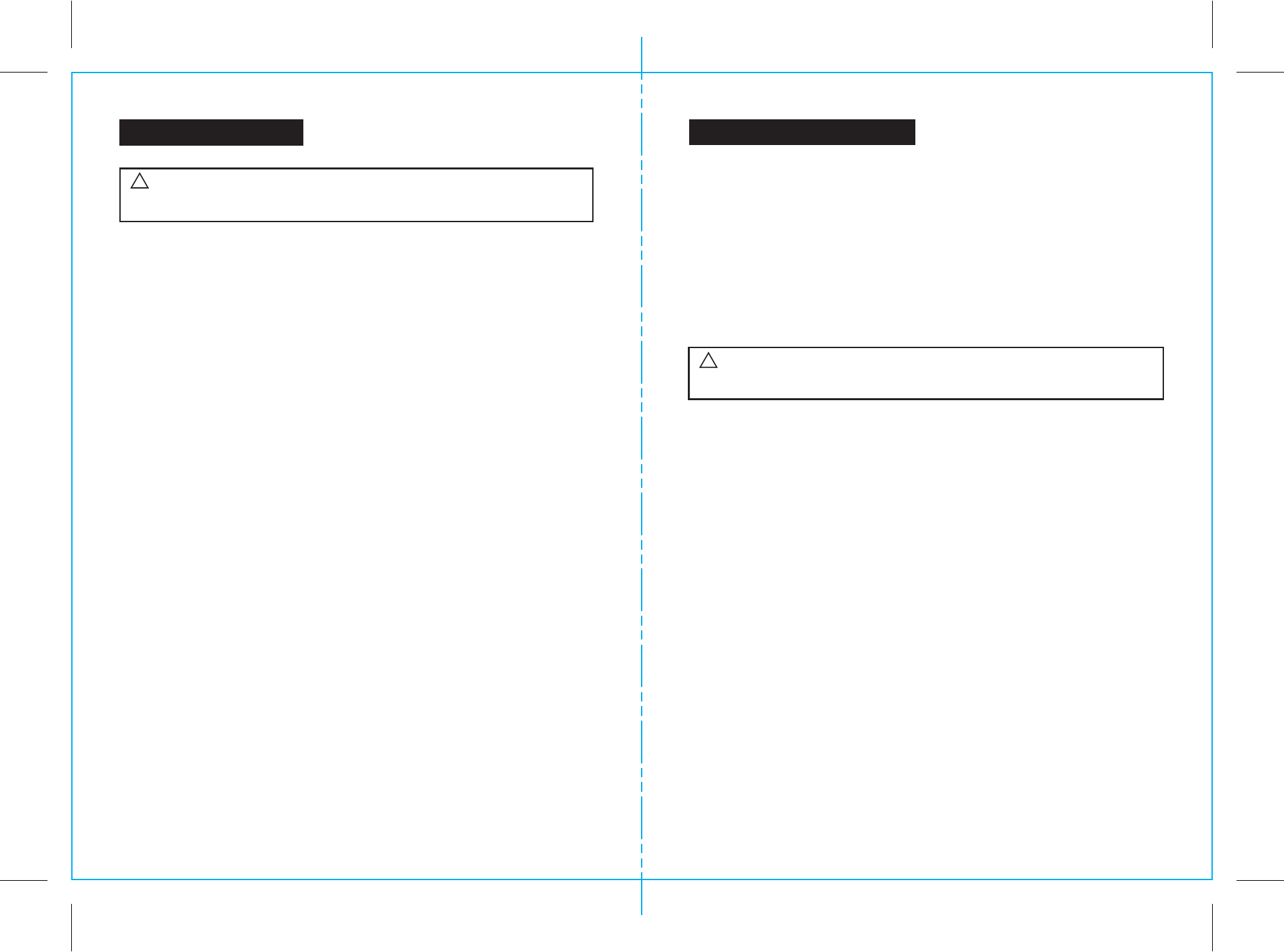
REV 10855
2-12-08
4 5
SAFETY INSTRUCTIONS
WARNING: BE SURE to read and understand all instructions in this manual
before using this circular saw. Failure to follow all instructions may result in
hazardous radiation exposure, electric shock, fire and/or serious personal injury.
!
WORK AREA SAFETY
1. Keep your work area clean and well lit. Cluttered workbenches and dark areas
invite accidents.
2. DO NOT operate power tools in explosive atmospheres, such as in the presence
of flammable liquids, gases, or dust. Power tools create sparks which may ignite
the dust or fumes.
3. Keep bystanders, children and visitors away while operating a power tool.
Distractions can cause you to lose control.
4. Make your workshop childproof with padlocks and master switches. Lock
tools away when not in use.
5. MAKE SURE the work area has ample lighting so you can see the work and that
there are no obstructions that will interfere with safe operation BEFORE using your saw.
PERSONAL SAFETY
1. KNOW your power tool. Read the operator's manual carefully. Learn the saw's
applications and limitations, as well as the specific potential hazards related to this tool.
2. STAY ALERT, watch what you are doing and use common sense when operating
a power tool.
3. DO NOT use tool while tired or under the influence of drugs, alcohol or medication.
A moment of inattention while operating power tools may result in serious personal injury.
4. DRESS properly. DO NOT wear loose clothing or jewelry. Pull back long hair. Keep
your hair, clothing, and gloves away from moving parts. Air vents often cover moving
parts and should also be avoided. Loose clothing, jewelry or long hair can be caught
in moving parts.
5. AVOID accidental starting. Be sure switch is in “OFF” position before
plugging in. DO NOT carry tools with your finger on the switch. Carrying tools
with your finger on the switch or plugging in tools that have the switch in the
“ON” position invites accidents.
6. REMOVE adjusting keys or wrenches before turning the tool “ON”. A wrench
that is left attached to a rotating part of the tool may result in personal injury.
SAFETY INSTRUCTIONS cont.
7. Do not overreach. Keep proper footing and balance at all times. Proper footing and
balance enables better control of the tool in unexpected situations.
8. ALWAYS SECURE YOUR WORK. Use clamps or a vise to hold work when practical.
It is safer than using your hand and frees both hands to operate tool.
9. USE SAFETY EQUIPMENT. Always wear eye protection. Dust mask, non-skid
safety
shoes, hard hat, or hearing protection must be used for appropriate conditions.
10. DO NOT USE ON A LADDER or unstable support. Stable footing on a solid surface
enables better control of the tool in unexpected situations.
WARNING: BE SURE to read and understand all instructions before
operating this saw. Failure to follow all instructions listed below may result in
electric shock, fire and/or serious personal injury.
!
TOOL USE AND CARE SAFETY
PERSONAL SAFETY cont.
1. ALWAYS use clamps or other practical ways to secure and support the workpiece
to a stable platform. Holding the work by hand or against your body is unstable and
may lead to loss of control.
2. DO NOT force the tool. Use the correct tool and blade for your application. The
correct tool and blade will do the job better and safer at the rate for which it is designed.
3. DO NOT use the tool if switch does not turn it “On” or “Off”. Any tool that cannot be
controlled with the switch is dangerous and must be repaired.
4. DISCONNECT the plug from the power source before making any adjustments,
changing accessories or storing the tool. Such preventive safety measures reduce
the risk of starting the tool accidentally.
5. NEVER leave the tool running. ALWAYS turn it off. DO NOT leave the tool until it
comes to a complete stop.
6. STORE idle tools out of the reach of children and other untrained persons.
Tools are dangerous in the hands of untrained users.
7. MAINTAIN tools with care. Keep cutting tools sharp and clean. Properly maintained
tools with sharp cutting edges are less likely to bind and are easier to control.
8. CHECK for misalignment or binding of moving parts, breakage of parts, and any
other condition that may affect the tool's operation. If damaged, have the tool serviced
before using. Many accidents are caused by poorly maintained tools.
9. USE ONLY accessories that are recommended for this tool. Accessories that may
be suitable for one tool may become hazardous when used on another tool.

















